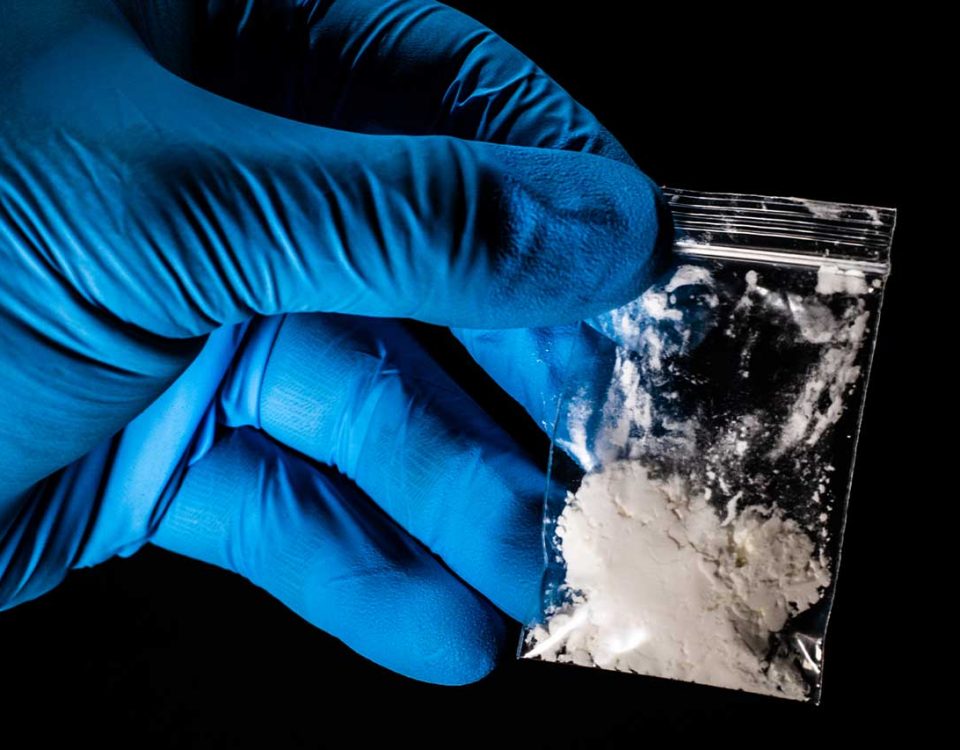The state of Alaska has witnessed a growing and complex issue that poses significant challenges to its healthcare, law enforcement, and social welfare systems: drug abuse and addiction. The rising prevalence of drugs in Alaska, including substance misuse, addiction, and associated social consequences, demands a comprehensive examination and understanding. The experts at our addiction treatment centers delve into the many Alaska drug problems that have emerged and worsened over the years, exploring the underlying causes, patterns, and evolving response strategies. We aim to contribute to the discourse on drug use in Alaska and offer insights into potential solutions and harm reduction measures.
What Drugs Are Illegal in Alaska?
Although both the federal government and Alaska classify substances based on similar criteria: their potential for abuse, biomedical hazard, likelihood of dependence, and relationship to criminal activity – the jurisdictions weigh the factors differently. As a result, drug schedules in Alaska are different from those of the federal government.
For instance, under federal law, Schedule I drugs include those that have “no currently accepted medical use.” However, Alaska has specifically removed these criteria. Instead, the more dangerous a drug is in Alaska, regardless of medical use, the higher it is placed on the drug schedules.1
For example, fentanyl is a powerful painkiller that’s frequently prescribed during childbirth and for end-of-life pain management. However, as a strong synthetic opiate, it is highly addictive and can be lethal if taken in excess. For these reasons, despite its medical use, Alaska classifies fentanyl as a schedule IA-controlled (Schedule I controlled) substance along with all opiates and opiate derivatives.1
Additionally, methamphetamine currently has no medical use and is seen almost exclusively in illegal drug trafficking. While methamphetamine is dangerous, it does not have the same potential for abuse as opiates. As such, it is classified as a schedule-IIA controlled (Schedule III controlled) substance in Alaska.
Alaska Drug Schedules
Below is a breakdown of the first four drug schedules in Alaska and the commonly used drugs classified under each:1,2
- Schedule IA (I): These are substances found to have the highest degree of danger or probable danger to a person or the public.
- Synthetic and Non-synthetic Opiates
- Heroin
- OxyContin (oxycodone)
- Actiq (fentanyl)
- Gamma-Hydroxybutyric Acid
- GHB (a common date rape drug)
- Schedule IIA (II): These substances are believed to have a degree of danger or probable danger to a person or the public that is less than substances listed in Schedule IA but higher than substances listed in Schedule IIIA.
- Psychedelics/Hallucinogens
- Peyote
- Magic Mushrooms (psilocybin)
- PCP (phencyclidine)
- Ecstasy/Molly (MDMA)
- Stimulants
- Meth (methamphetamine)
- Adderall (amphetamine)
- Barbiturates
- Amobarbital (sodium 5-ethyl-5-isopentyl barbiturate)
- Nembutal (pentobarbital)
- Cocaine
- Psychedelics/Hallucinogens
- Schedule IIIA (III): These substances are believed to have a degree of danger or probable danger to a person, or the public less than the substances listed in Schedule IIA but higher than substances listed in Schedule IVA.
- Stimulants: Appetite Suppressants
- Didrex (benzphetamine)
- Depressants: Sedative-Hypnotics
- Doriden (glutethimide)
- Sulfonmethane (acetone diethylsulfone)
- Certain Anesthetics
- Telazol/Zoletil (tiletamine & zolazepam)
- Stimulants: Appetite Suppressants
- Schedule IVA (IV): These substances have a degree of danger or probable danger to a person or the public, less than the substances listed in Schedule IIIA but higher than those listed in Schedule VA.
- Benzodiazepines
- Xanax (alprazolam)
- Ativan (lorazepam)
- Valium (diazepam)
- Ketamine
- Benzodiazepines
- Schedule VA (V): Have a degree of danger or probable danger to a person or the public less than substances listed in Schedule IVA but higher than those listed in Schedule VIA.
- Buprenorphine
- Suboxone (buprenorphine hydrochloride)
- Anabolic Steroids
- Testosterone
- Anadrol (oxymetholone)
- Buprenorphine
- Schedule VIA (VI): Found to have the lowest degree of danger or probable danger to a person or the public.
- Marijuana
Commonly Abused Alaska Drugs
In 2021, the Statewide Drug Enforcement Unit (SDEU) made 146 unique drug and alcohol arrests in Alaska. The kind, amount, and value of narcotic drugs and alcoholic beverages seized in Alaska in 2021 are as follows:
- Marijuana: 49,078 grams
- Methamphetamine: 25,838 grams
- Heroin: 9,296 grams
- Cocaine: 6,320 grams
- Fentanyl: 612 grams
From 2020 to 2021, there was a 20% increase in the number of liters of alcohol seized by law enforcement.3 There were also 176 marijuana-related drug seizures (marijuana, marijuana BC bud, marijuana edibles, THC liquid, and THC resin), 56 cocaine and crack drug seizures, 194 heroin seizures, 29 fentanyl seizures, and 270 alcohol seizures in the period.3 Based on this data, we can determine that the most commonly used substances in Alaska include alcohol, marijuana, cocaine, heroin, methamphetamine, and fentanyl.
What Is the Drug Rate in Alaska?
The most recent survey determined the drug rate in Alaska to be 13.65%. The national average was 8.82%, with 3.62% of Alaska residents reporting using an illicit drug other than marijuana in the past month (the national average was 3.33%).4
These statistics underscore the significant Alaska drug problems faced by the state, with a particular emphasis on the use of illicit drugs beyond marijuana. Policymakers, healthcare professionals, and community organizations must address these issues comprehensively and implement evidence-based interventions to mitigate the impact of drug abuse on public health and social well-being in Alaska.
How Many Overdoses Are There in Alaska?
While the various Alaska drug problems include a variety of substances, opioids such as fentanyl have become a major concern in the state. Illicit opioids such as fentanyl and heroin, as well as prescription painkillers, are among the top regional drug threats in Alaska.
According to the Department of Health and Social Services (DHSS), Alaska Division of Public Health, Section of Epidemiology, fentanyl overdose deaths increased by 193% statewide from 2019 to 2020.3
A comparison between the first 3 quarters of 2019 and the same 3 quarters of 2020 showed that fentanyl overdose deaths increased by approximately 238% statewide. Additional data has shown that fentanyl has so far accounted for approximately 49% of all drug overdoses in Alaska in 2020.3
Drug Trafficking in Alaska
Drug trafficking is a complex and persistent challenge in Alaska, with the state serving as a crucial transit point for illicit substances due to its geographic location. Alaska's extensive coastline, remote areas, and porous borders contribute to its vulnerability to drug trafficking activities.
The most trafficked drugs in Alaska include methamphetamine, opioids, cocaine, and marijuana. The drug trade often involves organized criminal networks and poses substantial risks to public health and safety.
Alaska's proximity to international drug source regions, such as Asia and South America, further complicates the fight against drug trafficking. The state's vast, sparsely populated areas provide cover for clandestine drug labs and cultivation operations.
Anchorage, in particular, consists of 40% of the state’s population and is a central hub for narcotics trafficking.5 Law enforcement faces challenges related to limited resources and the need for specialized training to combat drug trafficking effectively in Alaska's unique environment.
A multi-pronged approach to address this issue is essential, involving law enforcement, prevention, treatment, and education. Initiatives focused on reducing demand for illicit drugs, providing access to treatment centers in Alaska, and raising public awareness about the consequences of drug trafficking are vital components of Alaska's efforts to mitigate the impact of drug trafficking on its communities.
Alaska Rehab for Addiction
The issue of addiction and drug abuse are pervasive and challenging problems in Alaska. Drug addiction takes a toll on individuals, families, and communities, affecting not only physical and mental health but also social well-being and economic stability. Addressing these issues requires a multi-faceted approach, and one crucial element in this battle is access to effective addiction treatment.
Banyan Alaska, as a reputable Alaska treatment center, plays a pivotal role in providing comprehensive and evidence-based substance abuse treatment services. The dedication of our healthcare professionals, commitment to patient well-being, and the utilization of innovative treatment modalities are essential assets in the fight against addiction in the state.
If you or someone you care about is battling addiction, reach out to us immediately. Call Banyan Treatment Centers at 888-280-4763 or contact us online to learn how our addiction treatment in Alaska works.
Sources:
- Alaska Legal Resource Center - Chapter 71. Controlled Substances
- The Alaska State Legislature - Controlled Substance Statutes Reference Chart
- Statewide Drug Enforcement Unit (SDEU) - 2021 Annual Drug Report
- Executive Office of the President of The United States – Alaska Drug Control Update
- United States Drug Enforcement Administration - Operation Engage Anchorage has moved to Spokane








